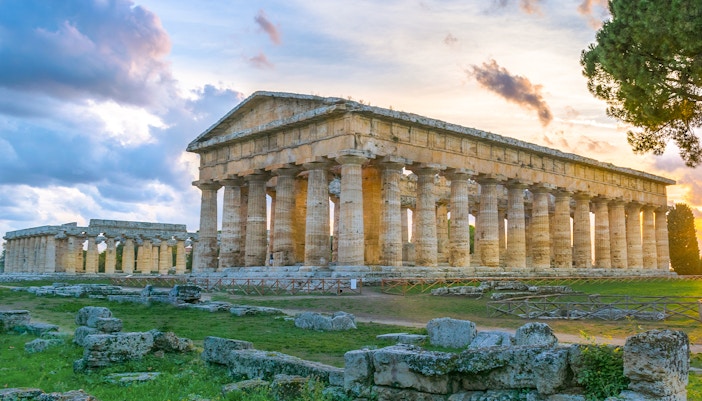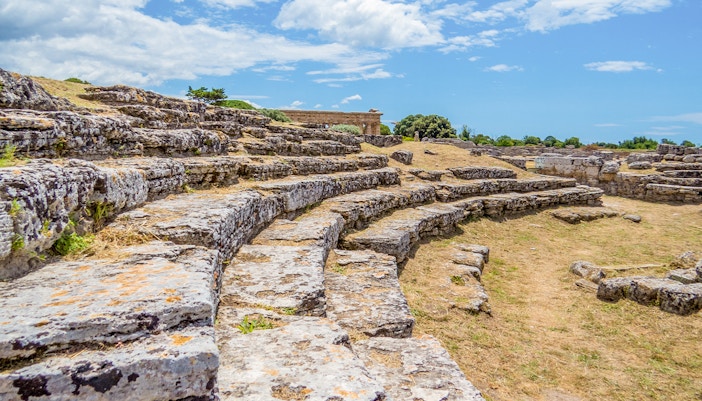History of Paestum Archaeological Park In a Nutshell
Paestum, originally known as Posidonia, was founded by the Greeks around 600 BC. A significant city of the Magna Graecia, it was named after Poseidon, the god of the sea. In its early history, Paestum flourished as a cultural, commercial, and political hub, as evidenced by the three grand Doric temples dedicated to Hera, Athena, and Neptune, built in the 6th and 5th centuries BC.
Around 400 BC, the city fell under Lucanian control before being conquered by the Romans in 273 BC. It was then Romanized and renamed Paestum. The Romans integrated their architectural style with the existing Greek structures, resulting in a unique mix of Greek and Roman architecture, visible in the Roman Forum.
Paestum began to decline in the early Middle Ages, primarily due to malaria and Saracen invasions. The city was eventually abandoned and forgotten until rediscovery in the 18th century during the construction of a road. Archaeological excavations began in the 20th century, unearthing its remarkable ruins. Today, the Archaeological Park of Paestum is a UNESCO World Heritage site, acclaimed globally for its well-preserved Ancient Greek temples.
















